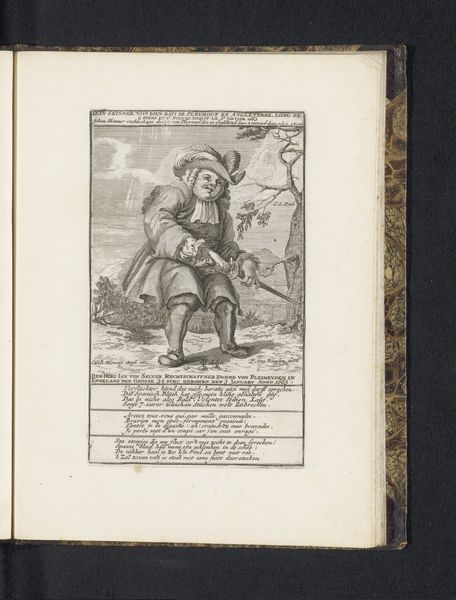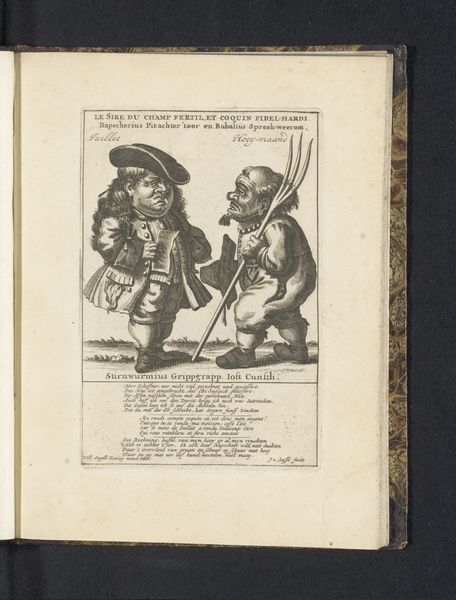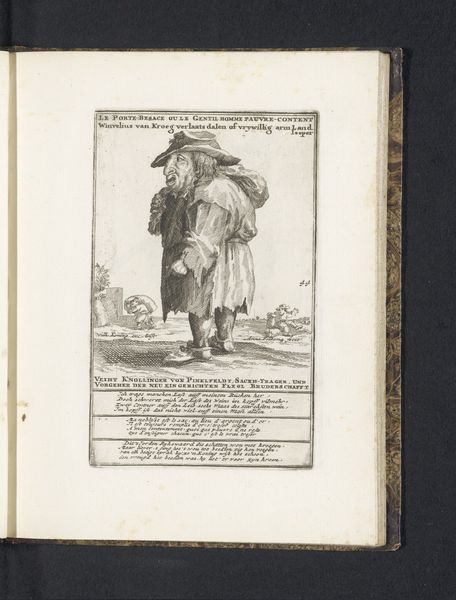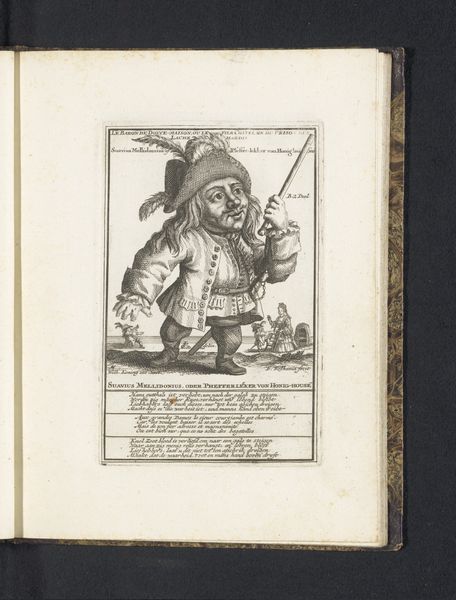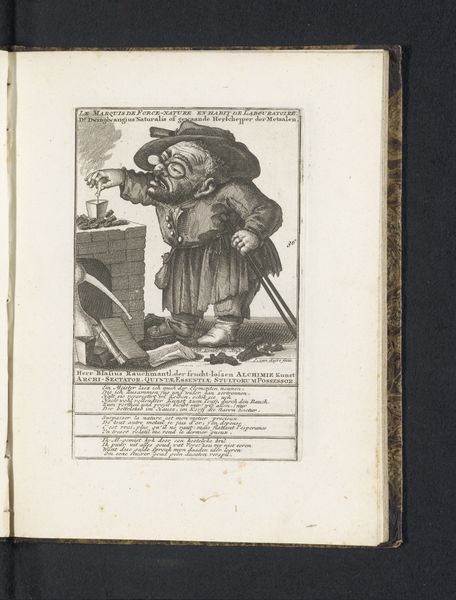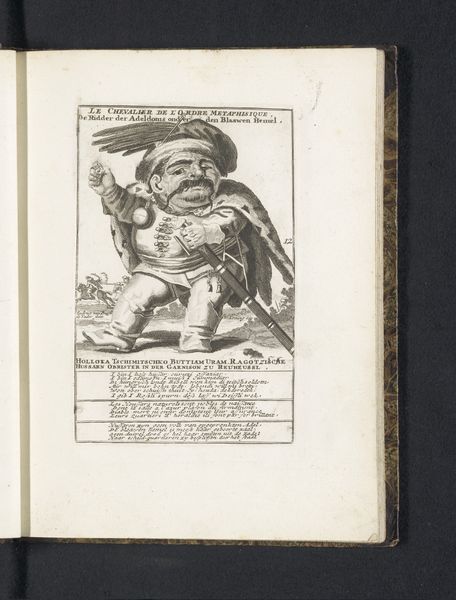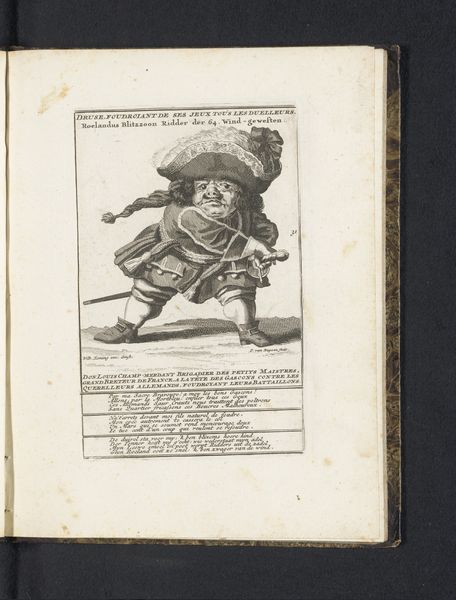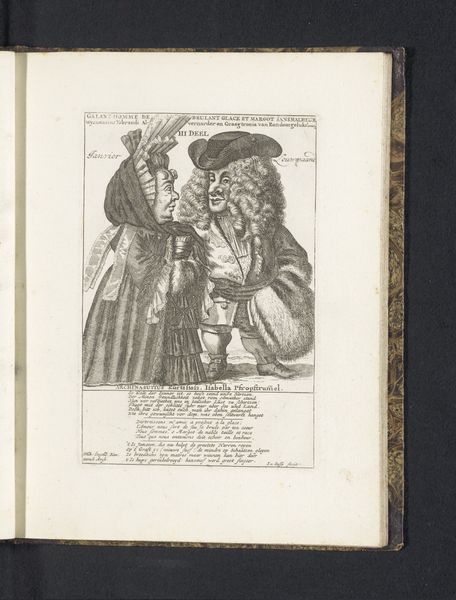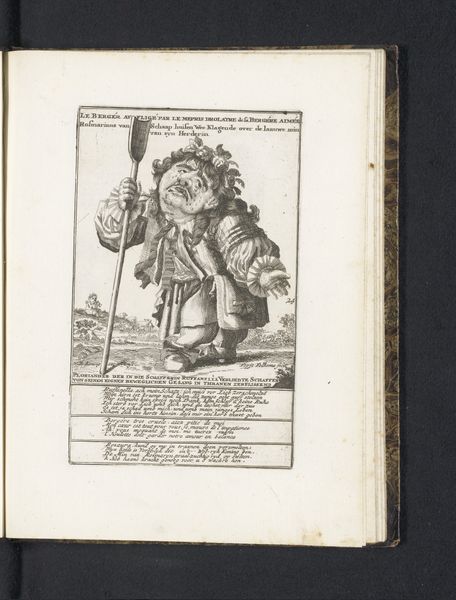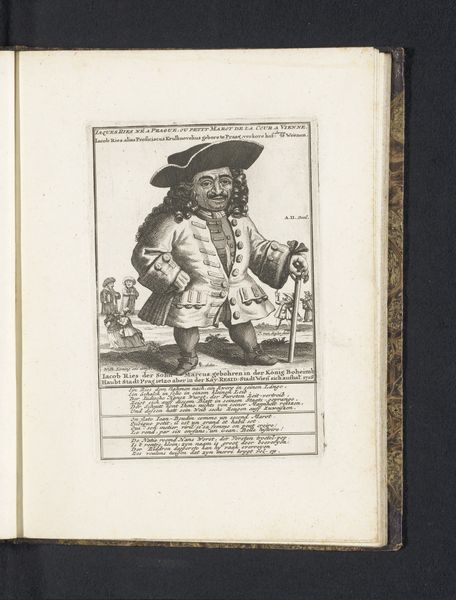
print, engraving
#
portrait
#
baroque
#
dutch-golden-age
# print
#
genre-painting
#
engraving
Dimensions: height 169 mm, width 105 mm, height 227 mm, width 170 mm
Copyright: Rijks Museum: Open Domain
This engraving, dating from 1720, is by Joost van Sassen, and it depicts a figure identified as Helvetuis van Geldeloos. The name suggests a link to both Switzerland, or 'Helvetia' in Latin, and the province of Gelderland in the Netherlands. At first glance, it presents a simple character study. But, we should consider the social context in which this image was made. The Dutch Republic in the early 18th century was a society grappling with its identity. The Golden Age of trade and prosperity was waning, and there was growing anxiety about national identity. Figures like Helvetuis may have served as a commentary on the perceived decline of Dutch society. We can look at the figure’s costume, the landscape, and the accompanying text beneath the image. These elements offer insights into the values, anxieties, and social norms of the time. It's the job of the historian to connect the dots and consider the role of art as a mirror reflecting these societal concerns. We might consult historical texts, costume archives, and literature from the period to gain a more thorough understanding.
Comments
No comments
Be the first to comment and join the conversation on the ultimate creative platform.
